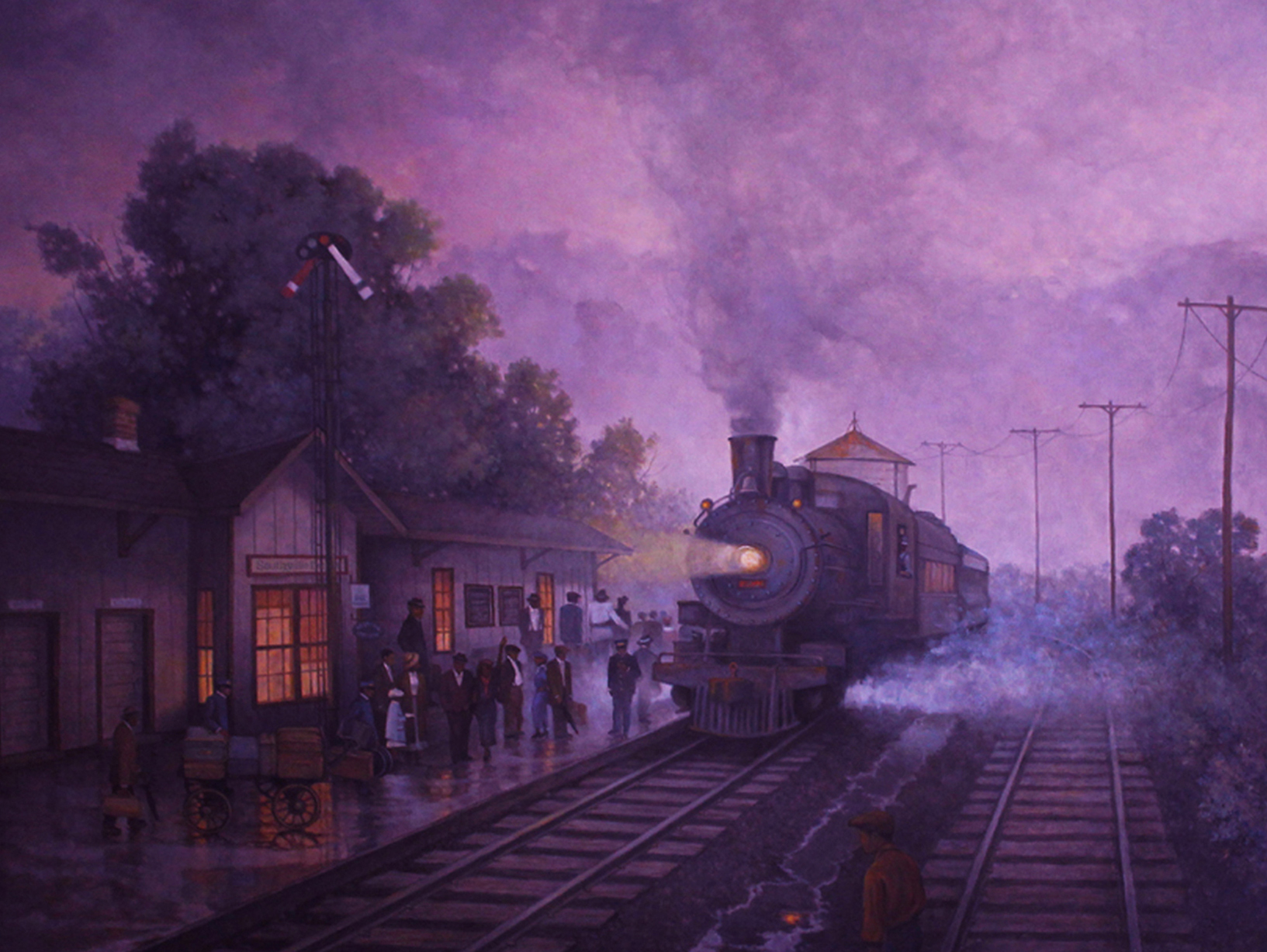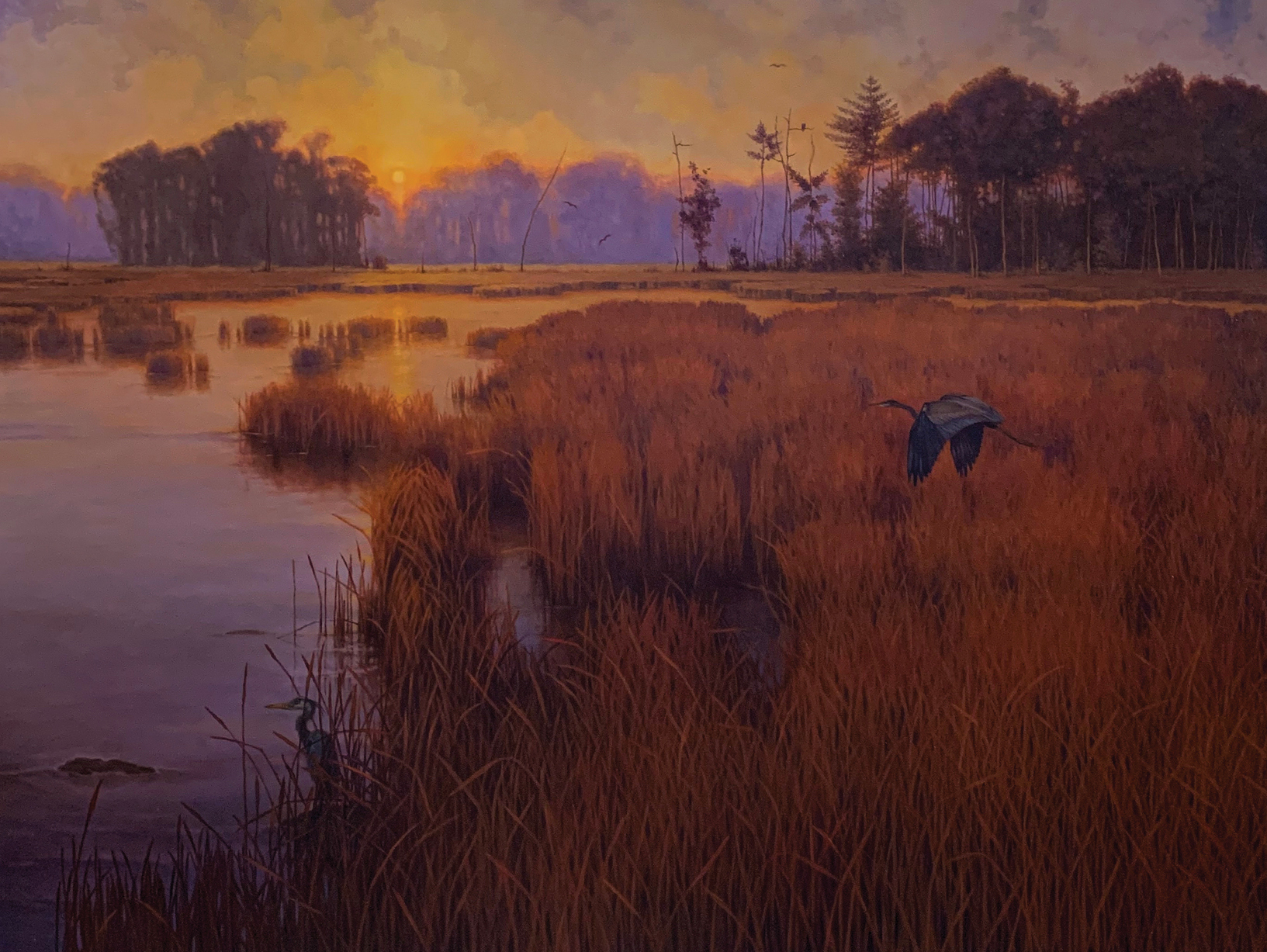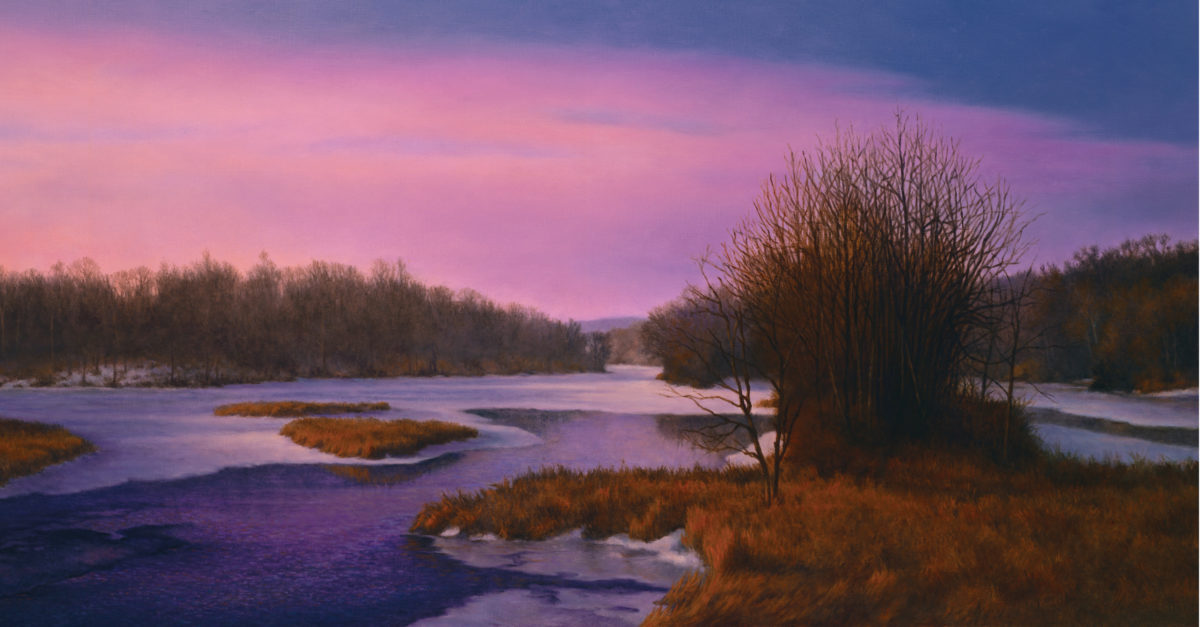The Painting of a Dream
Mason Archie’s identity has been inextricably linked to art since he was a child. Acceptance into a prestigious high school changed the course of Archie’s life, catapulting him into success in pictorial art and outdoor advertising. He eventually made his way back to his roots in fine art, quickly becoming an in-demand, award-winning oil painter.

Were you interested in art as a child?
Art was the primary interest of mine when I was younger. In elementary school, I was sought out by my teachers for special projects, like painting backdrops for school plays or creating illustrations or diagrams for lessons.
I was good at sports, but I enjoyed art so much more. In the seventh or eighth grade, I played basketball for the Boys and Girls Club of Dayton in the summer. There was an art class also held there, and, at some point, I walked into the class and started drawing. When the teacher saw my art, she had me work with her class. She would pick me up from my house and bring me to the Boys and Girls Club. I grew up very poor and my parents never owned a car, so this was a great opportunity that art opened up for me.
What role did high school play in your pursuit of an art career?
Patterson Co-Op was very unique. It was a public school, but you had to apply to go there, and you needed good grades and a good attendance record. The school was located in downtown Dayton, Ohio. In sophomore year, I spent mornings at the school in regular classes, but I spent afternoons studying in the fields I was most interested in, like art and design. At the end of that year, literally every student, because of the reputation of the school, wound up getting a job. Students worked forty hours a week, but we would alternate between two weeks working and two weeks back at school. There was also never a summer break once you got to sophomore year. At that point, I was making more money than my parents.
With the help of my high school, I was able to work for Lamar Advertising Company at the age of sixteen. Immediately after school, I worked full time for Lamar and eventually became the art director at a young age. I also started a small commercial sign company and specialized in graphic design.

Will you talk about your career as art director and pictorial artist for Lamar Advertising? How did that come about?
I remember interviewing at Lamar and showing them my portfolio. I was wearing a suit for the interview, and after they saw my artwork, they handed me a pair of overalls to wear and put me to work that minute painting billboards that were fourteen feet by forty-eight feet long. They were made to look like replicas of photographs, and I would paint on twenty interlocking steel panels that would then be reassembled on-site by the construction crew.
At around nineteen, I was promoted to art director. I was the only African American there, and I was also the youngest in the department. I faced a lot of animosity from my peers because of the opportunities allotted to me. It was seen as an irregularity for me to be both an African American and highly skilled in my profession. I was a natural fit at Lamar, however. As one of their best pictorial artists and art directors, I often worked at sites across the country where help was needed.
What spurred you to transition to full-time fine artist?
My wife, Carlene, and I owned a successful day care, which she ran in Indianapolis. And Lamar was in Dayton. One evening, I was doing a painting of my eighteen-month-old daughter, and it was the first time my wife had seen me do fine art. She commented, “How could you not be doing this?” She bought me art supplies and said I should paint. I didn’t get around to it for three years, though. Around that time, there was an incident with my daughter where she almost drowned while I was in Dayton. At that point, I dropped everything to come home and live in Indianapolis; I also set up a studio to paint in.
Did you have a mentor of fine art during this time?
I contacted Simmie Knox, the first African American artist to be commissioned for a presidential portrait. He had a billboard background as well. He took me on and mentored me over the phone. “Don’t worry about showing your art. Just work on getting good at it,” he told me. I decided to start with landscapes. I studied paintings from the Hudson River School (a collective of landscape artists in the mid-nineteenth century). Knox told me, “Until your work can hang in the same room as theirs, don’t show it.” I practiced for a year and a half and then started researching galleries.

What did your first gallery experience look like?
I went to a gallery in Louisville and showed them my art, and they bought all of my paintings. They started selling them at $5,000. They sold faster than I could paint them. It got to the point where people were buying ideas of paintings in advance. We raised prices twice a year by 10-15 percent for six years straight. In less than two years, the gallery was selling my work across the country. And I started getting calls from people like Spike Lee and Alonzo Mourning.
Do you experience artist’s block?
I never experience artist’s block. There are so many ideas running through my head that I know it may be impossible to get them all out. This may be due to a late start with my fine art career.
Will you talk about the youth organization you founded?
After I moved to Indianapolis, I created Kindred Spirits in the office complex across the street from our day care. I set up a studio, a gallery space, a picture-framing workshop, and commercial sign equipment. This was all free for the kids. They could learn computer graphics, Adobe software, fine art, etc. My wife has a finance background, so she was doing financial literacy with the kids. Before we knew it, we had sixty students. Eli Lilly as well as the Fifth Third Bank also began supporting the organization.
Art has been such a positive influence in my life. Through Kindred Spirits, I am able to share my experiences with young people. Art education and exposure is not as available or intentional in the public-school system as it was when I was an adolescent.

What projects have excited you the most over your career?
Indiana is home to some of the country’s oldest art competitions. Competing in them has been rewarding. The Arts Council of Indianapolis and the Lilly Endowment granted me a Creative Renewal Arts Fellowship that allowed me to work on specific paintings tailored toward my interests. My first exhibit was with Simmie Knox, which was a great honor for me.
In 2014, I was chosen to contribute a piece of art to the Eskenazi Health facilities as part of a collection with seventeen other artists, designed to support the environment of health and healing.
Currently, I am traveling the country painting the Underground Railroad historic sites. I am also working with master printmakers Curlee Raven Holton and Jase Clark to produce etchings and serigraphs. The ongoing project started at the Experimental Printmaking Institute on the Lafayette College campus in Easton, Pennsylvania.
What do you want to leave as your legacy?
I want to be a major influence in assisting art education and opportunity, and I hope to be considered one of the best painters of my time.
For more info, visit masonarchie.com






















